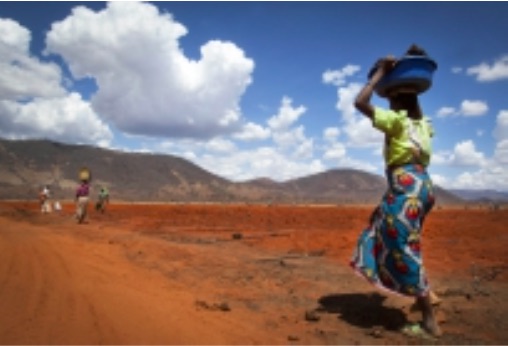. . SUSTAINABLE DEVELOPMENT . .
An article by The Food and Agriculture Organization of the United Nations
Ending hunger, achieving food security and improved nutrition, and promoting sustainable agriculture – SDG2 [Second Sustainable Development Goal of United Nations] – will require commitment and action at the national level, supported by engagement from the international community. That was the main message from a side event held in New York on 17 April on the margins of the Second drafting session of the Third International Conference on Financing for Development (FfD3).

The panel discussion, organised by the Food and Agriculture Organization (FAO), the International Fund for Agricultural Development (IFAD) and the World Food Programme (WFP) – the Rome-based agencies of the United Nations, brought together multiple voices to explore the policies and investments needed to successfully implement SDG2 of the July 2014 proposal of the intergovernmental Open Working Group (OWG) of the UN General Assembly on Sustainable Development Goals (SDGs).
The event took place immediately ahead of a joint session (20-24 April) of the Financing for Development process and UNGA intergovernmental negotiations on the post-2015 development agenda, and less than three months before the FfD summit which takes place in Addis Ababa between 13 and 16 July.
Identifying investments that go beyond business as usual, financing mechanisms from a global partnership perspective and the challenges countries will face in financing SDG2 as an integrated package stood out among lively exchanges between panellists and participants from member states, civil society, the private sector and research institutions in the discussion chaired by Tekeda Alemu, Permanent Representative of Ethiopia to the United Nations.
“With the SDGs we have raised the level of ambition,” said keynote speaker George Wilfred Talbot, Permanent Representative of the Republic of Guyana to the United Nations, beginning his address. “I think it is absolutely imperative that we find the ways and means of addressing this challenge. Why? Because [hunger] is depriving hundreds of millions of people from the opportunity to fulfil their potential and to contribute to the progress of humanity.”
Mr Talbot, who is co-facilitator of the Financing for Development negotiations, said he and his colleague – Geir Pedersen, Permanent Representative of Norway – had flagged the SDG2 area as one requiring “special attention” in the process.
“In addressing the challenge of hunger and food insecurity, we are contributing to the potential for achieving other goals,” he said. “It is critical to poverty, as more than 75 percent of the poor live in rural areas and are heavily dependent on agriculture.
“One of the challenges we face is to transform the agriculture sector to make it viable and sustainable. We need to get youth to see a future in agriculture.”
The relationship between SDG2 and other goals was picked up on by Susan Eckey, Minister Counsellor of the Permanent Mission of Norway to the United Nations, who focused on biodiversity, resilience, fisheries and gender equality.
“Agricultural biodiversity is critical to ensure the stability, resilience, nutrition and continuing evolution of farming and thus long-term food security and livelihoods for small-scale farmers,” she said.
(Article continued on right side of page)
Can UN agencies help eradicate poverty in the world?
(Article continued from left side of page)
Guy Evers, Deputy Director of FAO’s Investment Centre, stated that the fight to eliminate poverty and hunger would be won or lost in rural areas.
“Despite significant rural to urban migration, extreme poverty is becoming more concentrated in rural areas, where there are lower levels of public and private investments, poorer infrastructure and fewer services targeted to the most vulnerable,” he said. “Growth in agriculture is more effective in reducing poverty than growth in other sectors. We need more and better investment in agriculture.”
FAO, he revealed, is updating a report that will include calculations of the level of investment needed to support the required expansion in food production for ending hunger by 2030.
While pointing out the importance of scaling up best practices, Josefina Stubbs, IFAD Associate Vice-President, highlighted the value of focusing on smallholders, who represent the biggest investors in agriculture. “Most of the food that people are consuming around the world comes from smallholder farms,” she said. “They are not the problem, but part of the solution. We see the need of smallholder farmers to have access to markets and to have access to credit.”
Amir Abdulla, WFP Deputy Executive Director, outlined the common vision the three Rome-based agencies share in “working together towards eliminating the root causes of hunger, poverty and malnutrition”.
“We stand united in the discussions and consultations that are going on around the means that are necessary to realise the new agenda,” he said before drawing attention to a Think-Piece contribution by the Rome-based agencies entitled Food Security, Nutrition, and Sustainable Agriculture at Centre Stage on the Road to the Addis Ababa Conference that had been circulated among the audience ahead of the event.
The Addis outcome is expected to have a significant bearing on means of implementation for the Post-2015 Development Agenda, which will be adopted at a Summit at Heads of State and Government level between 25 and 27 September 2015.
(Thank you to the Good News Agency for pointing out this article to us.)